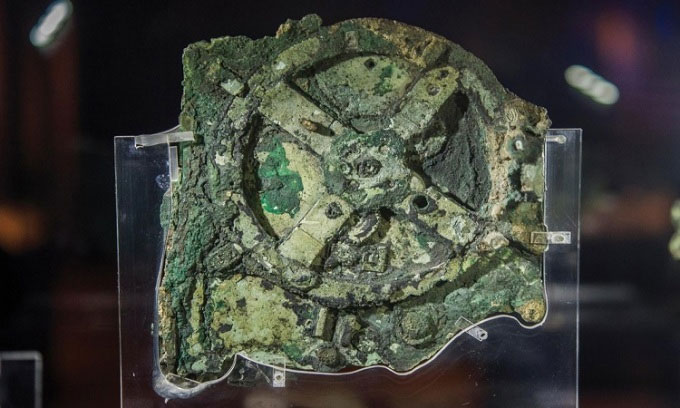The launch date of the mysterious Antikythera mechanism, considered the world’s first computer, may be December 22, 178 BC.
Divers discovered the Antikythera mechanism, a complex device, in a Roman shipwreck near the island of Antikythera, Greece, in 1901. It is roughly the size of a shoebox and contains gears and dials inscribed with numerous small inscriptions, capable of predicting solar and lunar eclipses and performing various other functions. Over the years, researchers have carefully pieced together the fragments of the Antikythera mechanism to understand how it was constructed and used two millennia ago.

Remaining parts of the Antikythera mechanism. (Photo: Smithsonian).
The launch date is significant because all calculations of the device would be based on it. To use a measuring tool, a reference point is needed before conducting the measurement process, the research team noted. Just as a calendar requires a fixed date, anyone using this device would need a launch date to serve as a basis for all calculations.
Previous studies have deciphered many inscriptions and understood the purpose of various gears and dials. In 2021, a team of experts at the University of California, Los Angeles (UCLA), announced they successfully recreated a model of the Antikythera mechanism. However, the launch date remains one of the mysteries without a precise solution, Space reported on November 18.
In a newly published study on the online database arXiv, experts present reasons for believing that December 22, 178 BC, is the launch date. First, a solar eclipse lasting over 12 minutes occurred on that day. Second, the following day – December 23 – is the winter solstice, an important day for many ancient cultures. The festival of Isia, honoring the Egyptian goddess Isis, was celebrated in both Egypt and Greece at this time. Furthermore, the lunar phases also began on December 22 of that year.
According to the research team, the combination of these events creates a “very rare coincidence” and marks a memorable launch date. “The launch date needs to be distinctive, significant, and easily recognizable”, said Aristeidis Voulgaris, the lead author of the study and head of the project to Reconstruct the Function of the Antikythera Mechanism (FRAMe).
It is possible that the creator of the Antikythera mechanism witnessed this day and remembered the cosmic events. “To perform time calculations, people often choose a date closer in the past rather than a date in the future”, the research team commented.
However, some experts disagree with the findings of the new study. The research has numerous issues, according to Alexander Jones, a professor from the Institute for the Study of the Ancient World at New York University. For example, this launch date would place Kraneios, a season associated with wine noted on the Antikythera mechanism, in February, which is not a good month for ripe grapes. Jones also referenced two other studies from 2014 that suggested the launch date occurred in 204 BC.


















































